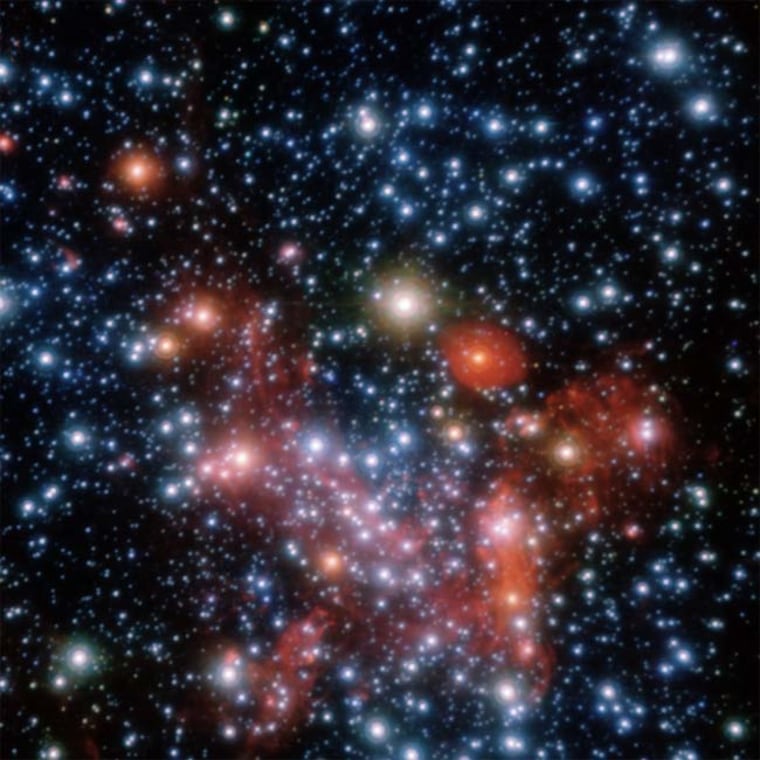Like ballerinas pirouetting around an invisible leader, a collection of stars orbits our galaxy's gravity sink, or black hole. New infrared images of the cosmic dance confirm that this supermassive black hole weighs as much as 4 million suns.
Supermassive black holes can weigh as much as a billion suns or more and are thought to reside at the centers of most, if not all, galaxies. They can't be seen, because their gravity is so powerful it traps even light, but astronomers infer their presence by watching the motions of stars and gas around them.
Over a period of 16 years, beginning in 1992, researchers monitored 28 stars orbiting the Milky Way's central region, where the supermassive black hole called Sagittarius A* is thought to lurk.
By watching how the central stars orbited Sagittarius A*, to which they are gravitationally bound, the researchers inferred properties of the black hole itself, such as mass and distance. They found that at least 95 percent of the mass affecting the stars must be within the black hole. Results gave a precise distance of 27,000 light-years from Earth to the presumed black hole. One light-year is the distance light will travel in a year, or about 6 trillion miles (10 trillion km).
"Undoubtedly the most spectacular aspect of our long-term study is that it has delivered what is now considered to be the best empirical evidence that supermassive black holes do really exist," said team leader Reinhard Genzel of the Max-Planck-Institute for Extraterrestrial Physics in Germany.
The new images also reveal common properties among the orbiting stars. For instance, the team found the innermost stars trek around the black hole in random orbits, while six of the 28 stars, which reside farther out, orbit the black hole in the same plane, just as our planets mostly do around the sun.
One particular star, known as S2, orbits the Milky Way's center so fast that it completed one full revolution within the study's 16-year period.
The researchers hope to continue to study the dancing stars to solve a long-held riddle as to how such stars ended up in their orbits about Sagittarius A*. They are too young to have migrated far, and scientists think it's improbable the stars formed in their current orbits where they'd be exposed to the extreme tidal forces of the black hole.
One explanation put forth recently is that the stars formed out of material that survived after a gas cloud plunged in toward the central black hole. This scenario was based on computer simulations. The researchers suggest that the six stars orbiting in a disk formed about 6 million years ago in this gas-cloud scenario.
The innermost stars could have once been in pairs, said lead researcher Stefan Gillessen, also of the Max-Planck-Institute. And so when the binary stars got too close to the supermassive black hole, the gravitational energy may have been shuffled around between the stars. In that way, one member of the pair would've been kicked out while the other remained. These innermost stars — each missing a partner — are estimated to be about 50 million years old.
The recent finding involved observations in 1992 with the SHARP camera aboard the European Southern Observatory's New Technology Telescope at the La Silla observatory in Chile; and more recent observations using instruments aboard ESO's Very Large Telescope.
